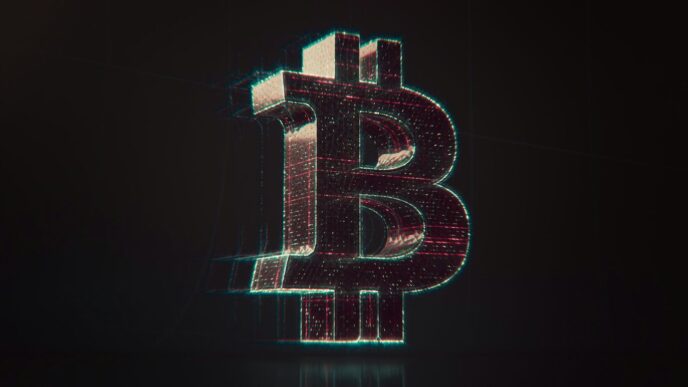The tech world has seen a lot of changes lately, and the recent Intel layoffs 2024 are a big part of that story. It’s not just about job cuts at one company; it shows bigger shifts happening across the whole industry. We’ll look at why these layoffs happened, what they mean for people working in tech, and what might come next for the sector.
Key Takeaways
- Intel’s 2024 job cuts were the largest in the tech sector, even as overall tech layoffs went down.
- The company’s decision was largely about moving towards AI and new chip technology, and also financial reasons.
- These layoffs are changing what skills are needed in tech and how local economies are doing.
- While Intel led in job cuts, the wider tech industry saw fewer layoffs compared to last year.
- People have mixed feelings about the layoffs, with some worried about job security and others seeing them as necessary changes.
Overview of Intel’s 2024 Layoffs
Scale of Workforce Reduction
Okay, so Intel had some pretty big layoffs in 2024. We’re talking about a reduction of roughly 15,000 jobs. That’s a lot of people. This makes Intel a leader in tech sector layoffs for the year. It’s part of a bigger restructuring plan to try and simplify things and get Intel back to focusing on what they’re good at – engineering. They’ve already shrunk from about 125,000 employees in 2023 to around 109,000 by the end of 2024. Ouch. It’s worth noting that Intel Foundry is expected to eliminate 15% to 20% of its personnel. That’s a lot of people affected by the Intel Foundry layoffs.
Context Within Broader Tech Layoffs
Even though Intel’s layoffs were significant, the overall tech industry actually saw a decrease in layoffs compared to 2023. Like, a 43% decrease. So, while Intel was cutting jobs, a lot of other tech companies were maybe doing a little better or at least not laying off as many people. It’s a weird mix of news. Some companies are doing okay, and others, like Intel, are going through some serious changes. It’s the third round of layoffs in a year for Intel, which is not a great sign. Former CEO Pat Gelsinger already cut 15,000 jobs in August 2024.
Geographic Impact of Job Cuts
The layoffs didn’t just hit one place; they were spread out. States like Oregon, California, and Arizona were significantly impacted. Intel’s Silicon Forest facilities in Oregon, for example, cut around 3,000 jobs but still have about 20,000 employees there. So, it’s not like any one area was completely wiped out, but there were definitely some regional economic repercussions. It’s tough for those communities when a major employer like Intel has to make these kinds of cuts. It’s a ripple effect, you know?
Reasons Behind Intel’s Decision
Intel’s 2024 layoffs, which included 15,000 job cuts, didn’t just happen out of the blue. There were definitely some key factors at play. It’s more than just "restructuring"; it’s about survival and trying to stay relevant in a rapidly changing tech world.
Strategic Realignment Towards AI
Intel is trying to catch up in the AI race. They’ve been a bit slow on the uptake compared to companies like Nvidia. A big part of the layoffs is about freeing up resources to invest more heavily in AI and advanced chip technology. It’s a gamble, but they need to make some moves to stay competitive. New Intel CEO Lip-Bu Tan wants to move faster to deploy new technologies.
Financial Performance and Restructuring
Let’s be real, Intel’s been struggling a bit financially. They even posted a loss of $821 million in the first quarter of 2025. The layoffs are part of a larger restructuring effort to cut costs and simplify operations. Former CEO Pat Gelsinger already cut 15,000 jobs as part of a $10 billion cost-saving plan. It’s all about streamlining and trying to get back to profitability. Intel plans to lay off factory workers to cut costs.
Competitive Landscape and Market Demands
The tech market is brutal. Intel faces tough competition in both the PC and data center markets. They’re also dealing with delays in federal CHIPS Act funding. All this pressure means they need to adapt quickly. The market demands innovation, and Intel is trying to reposition itself to meet those demands, even if it means making some tough decisions about job security.
Impact on the Tech Job Market

Okay, so Intel’s layoffs? Big deal. Like, really big. It’s not just about those 15,000 people directly affected; it’s about the ripple effect through the whole tech industry. It’s like when one domino falls, you know?
Shifting Demand for Tech Skills
Here’s the thing: it’s not just about less jobs, it’s about different jobs. Companies are all hot and bothered about AI artificial intelligence now, so if you’re not up on that, you might be in trouble. It’s like everyone suddenly needs to know a new language. The demand for specific skills is changing fast. I read somewhere that the industry experienced a 43% reduction in layoffs compared to the previous year.
Regional Economic Repercussions
Some places are going to feel this more than others. Think about it: if Intel has a huge plant in one town, and then they cut a bunch of jobs there, that town is going to hurt. Places like Oregon, California, and Arizona, where Intel had big operations, could see some slowdown. It’s not just the people who lost their jobs; it’s the coffee shops they used to go to, the stores they used to shop at. It all adds up.
Long-Term Outlook for Tech Employment
So, what does this all mean for the future? Honestly, it’s hard to say for sure. Some people are saying that the tech industry is just going through a correction after a period of crazy growth. Others are worried that this is the beginning of a longer-term decline. One thing’s for sure: if you want to stay in the game, you need to keep learning. The tech world isn’t standing still, and neither can you. There’s a growing emphasis on reskilling and continuous learning to remain competitive.
Sector-Wide Layoffs: A Comparative Analysis
Intel’s Position as a Leader in Layoffs
Intel definitely made headlines with its layoffs. In 2024, Intel was a leader in tech layoffs, cutting around 15,000 jobs. It’s a big number, no doubt. But it’s important to see how this fits into the bigger picture of what’s happening across the tech world. It’s not just Intel; other companies are also making tough choices.
Overall Decline in Tech Layoffs
Here’s a surprising fact: even with Intel’s big cuts, the tech industry actually saw a decrease in layoffs overall. Compared to last year, there were about 43% fewer layoffs. Roger Lee from Layoffs.fyi thinks companies are just trying to get their act together after over-expanding during the pandemic. It’s like everyone realized they hired too many people and are now trying to fix it. It’s a rebalancing act, apparently.
Factors Influencing Industry Stabilization
So, what’s making the industry chill out a bit? Well, a few things:
- Companies are focusing on being profitable. No more crazy spending sprees.
- Some companies are waiting to see what happens with the economy before making big moves.
- There’s a feeling that things might be getting back to normal after all the craziness of the last few years.
Of course, not everyone agrees. Some experts think these layoffs are just the beginning and that more cuts are coming. Art Zeile from DHI Group even thinks this could lead to renewed hiring trends later in 2024. Who knows what’s really going to happen?
Public Reactions and Expert Opinions
Criticism and Concerns Regarding Job Security
Okay, so when Intel announced these layoffs, the internet pretty much exploded. You saw a lot of anger online, especially on places like Twitter and Reddit. People were saying that Intel was being greedy and didn’t care about its employees. I saw one comment that said something like, "They’re making billions, and they still fire people?" It’s tough out there, and job security is a real worry for a lot of folks. It felt like a punch in the gut for many, especially with the rising cost of, well, everything.
Acknowledgment of Necessary Adjustments
But, it wasn’t all doom and gloom. Some people, especially industry analysts, were saying that these layoffs were a necessary evil. They argued that Intel needed to restructure to compete in the long run, especially with companies like AMD and Nvidia breathing down their necks. It’s like, sometimes you have to take a step back to leap forward, right? A few experts pointed out that Intel had probably over-hired during the pandemic boom and was now correcting course. It doesn’t make the job losses any easier, but it does offer a different perspective. It’s a tough pill to swallow, but some see it as a strategic move to stay relevant.
Discourse on AI’s Impact on Employment
One of the biggest conversations happening is about how AI is changing the job market. People are worried that AI is going to take over everything, and these layoffs at Intel just fuel that fear. But, there’s also a lot of talk about how AI could create new jobs too. It’s like, yeah, some jobs might disappear, but new ones will pop up that we can’t even imagine yet. The big question is whether people will have the skills to fill those new roles. There’s a big push for education and training programs to help people adapt. It’s a bit scary, but also kind of exciting to think about the possibilities of AI development.
Future Implications for the Tech Industry
Economic Shifts and Skill Demands
Okay, so what does all this mean for the future? Well, economically, things are probably going to get a little weird. We might see some areas slow down, especially those that relied heavily on companies like Intel. I’m talking about places with big Intel factories factory workforce. But at the same time, there’s going to be a huge demand for people with AI and other advanced tech skills. This could lead to some serious income inequality if we’re not careful.
Upskilling and Workforce Adaptation
Socially, there’s going to be a big push for people to learn new skills. If you want to stay relevant in the tech world, you’re going to have to keep up with the latest trends. This means:
- Taking online courses
- Going to workshops
- Basically, never stop learning.
It’s also possible we’ll see more people turning to the gig economy as companies look for specialized skills on a project basis. This could be good for flexibility, but it also means less job security. The need for cybersecurity is also going to be on the rise.
Policy Considerations for Labor Protection
Politically, all of this puts pressure on lawmakers to do something about the impact of AI and automation on jobs. We need policies that:
- Help people transition to new careers
- Protect workers from being exploited
- Make sure companies are held accountable for their actions.
Maybe we’ll see more government-funded retraining programs or incentives for companies to invest in emerging technologies. It’s a complex situation, but one thing is clear: the tech industry is changing fast, and we need to be ready for it. The rise in artificial intelligence is going to change the game.
Conclusion and Future Outlook
So, what does all this mean? Intel’s big job cuts in 2024 really show us where the tech world is headed. Even though Intel let go of a lot of people, the good news is that overall tech layoffs were down quite a bit compared to last year. It’s kind of a mixed bag, right? Like, some companies are still struggling, but the industry as a whole might be finding its footing. Intel’s trying to get into new stuff like AI, which is a smart move for them, but it also means some folks are out of a job. People have had a lot to say about it, some good, some not so good. It just goes to show that the tech industry is always changing, and we’re all just trying to keep up.
Frequently Asked Questions
How many people did Intel lay off in 2024?
Intel let go of about 15,000 workers in 2024. This was a big part of all the tech job cuts that year.
Did other tech companies also have a lot of layoffs in 2024?
Even though Intel had a lot of layoffs, the whole tech world actually had 43% fewer layoffs in 2024 compared to 2023.
Why did Intel lay off so many workers?
Intel said they needed to make these changes to “speed up their progress.” This likely means they want to focus more on new tech like AI and advanced computer chips.
Which areas were most affected by Intel’s layoffs?
These job cuts hit places like Oregon, California, and Arizona pretty hard, affecting local economies.
How do Intel’s layoffs change the tech job market?
These layoffs show that the tech job market is changing. Companies want people with skills in new areas like AI. This means some old jobs might go away, and new ones will pop up.
What did people think about Intel’s layoffs?
Many people were upset and worried about their jobs. But some experts think these changes were needed, especially after a lot of hiring during the pandemic.














